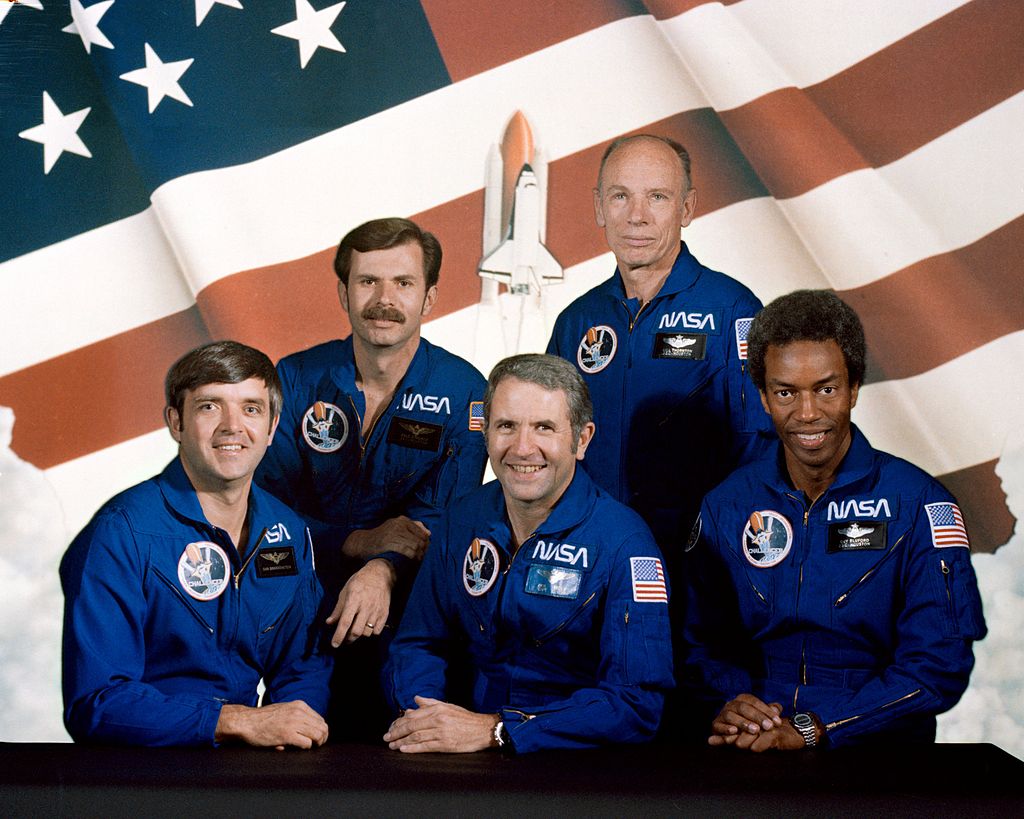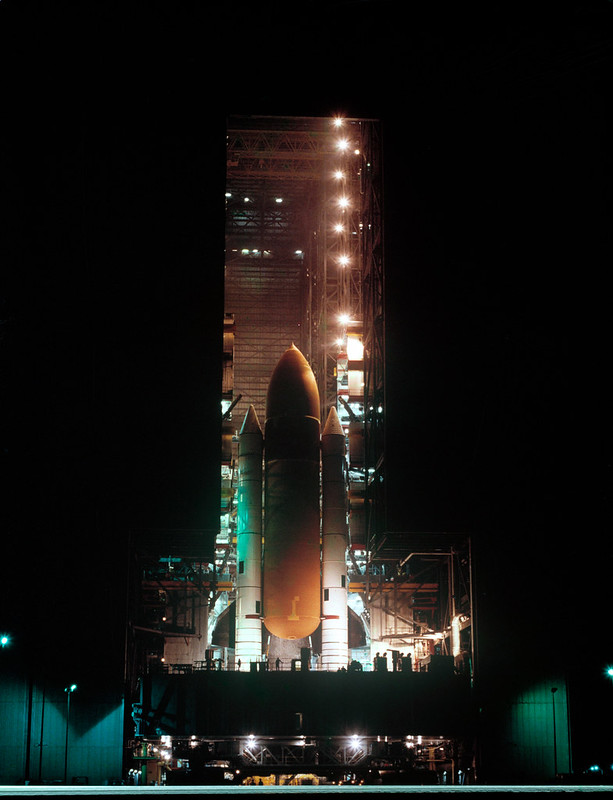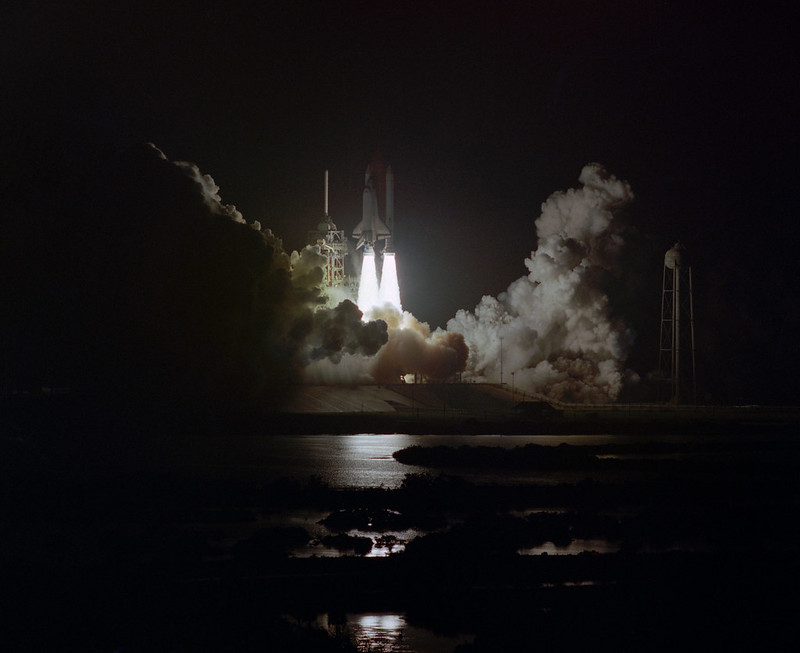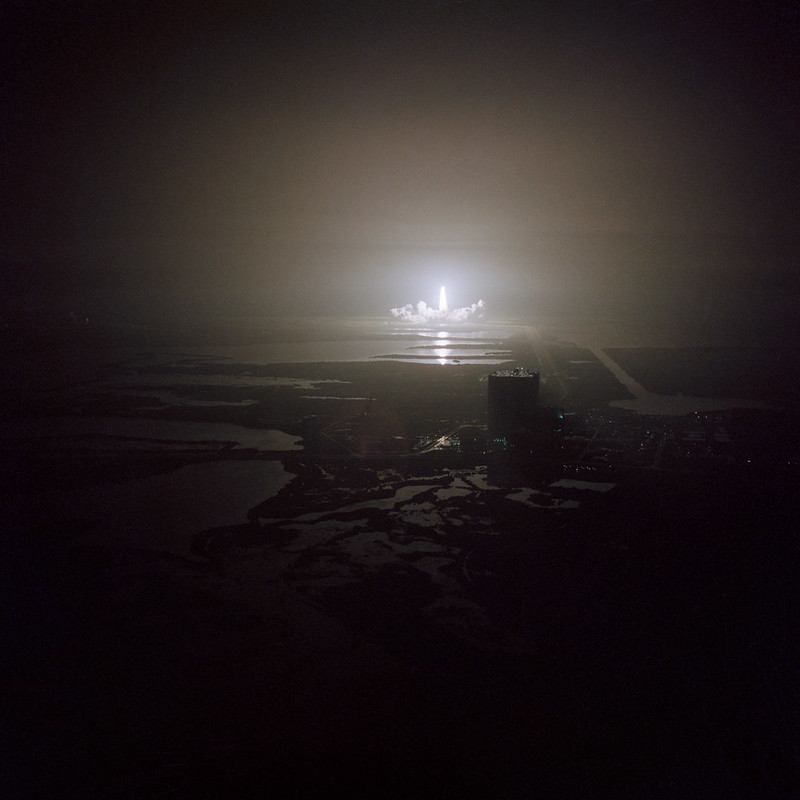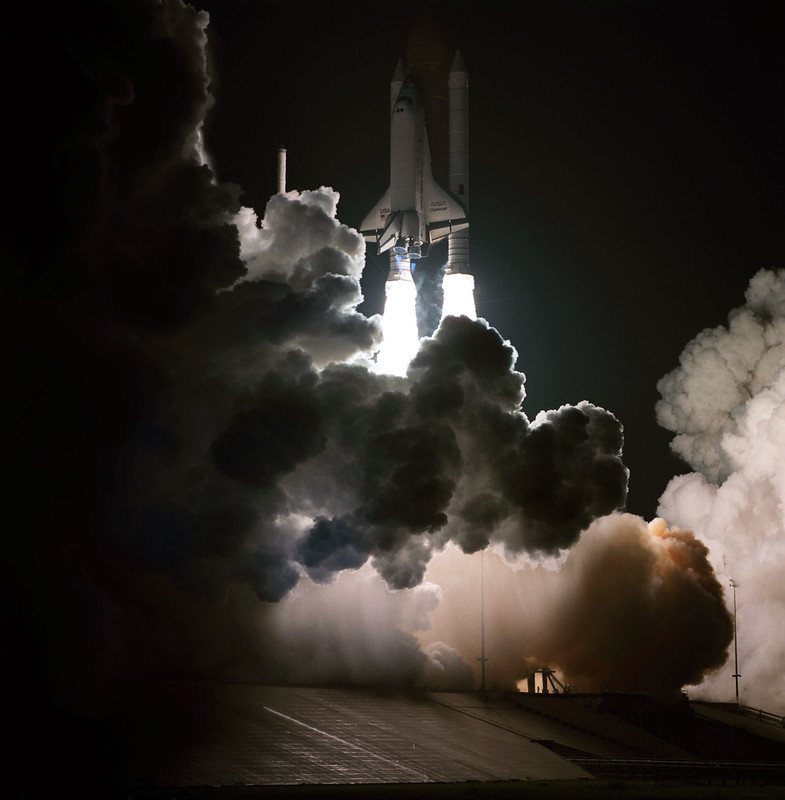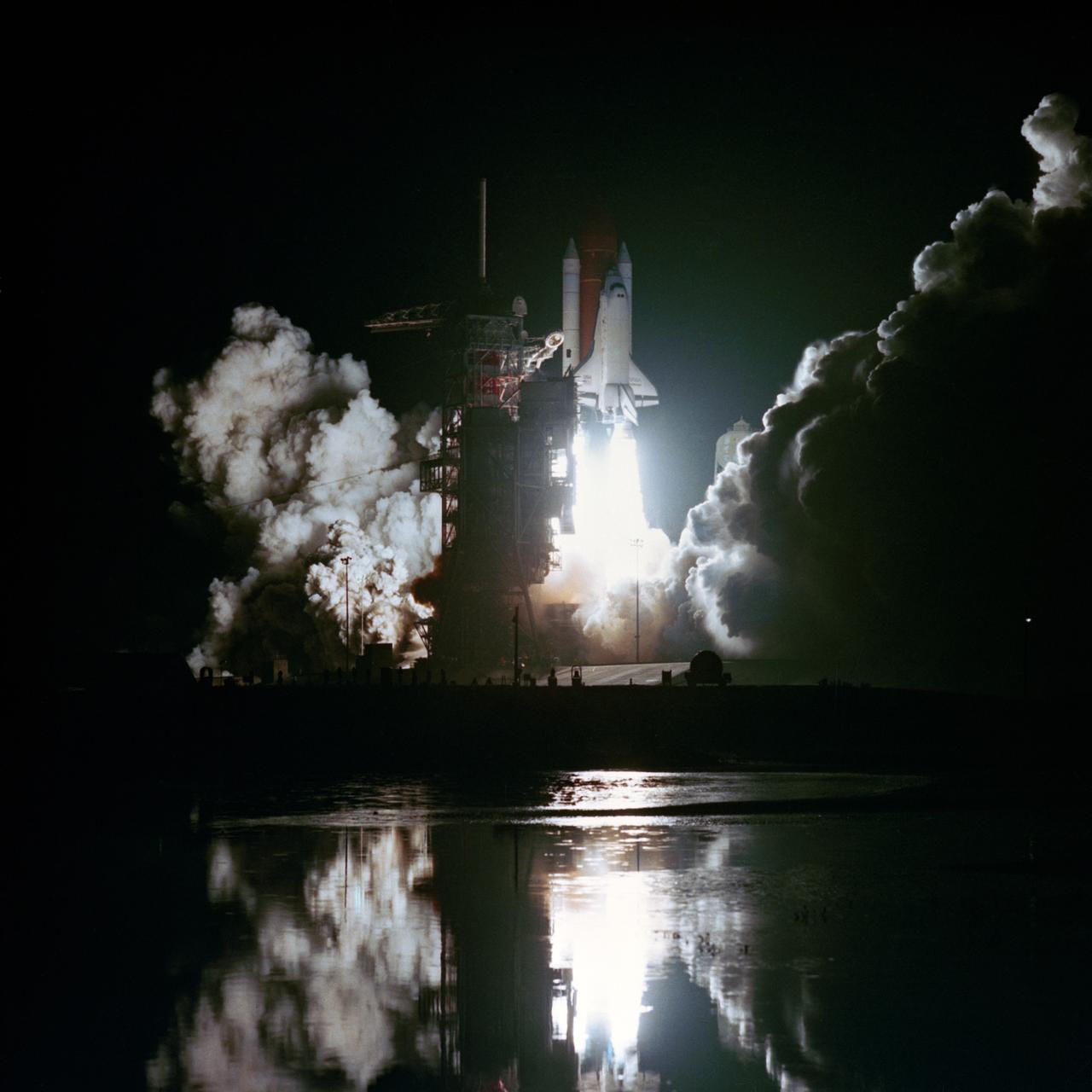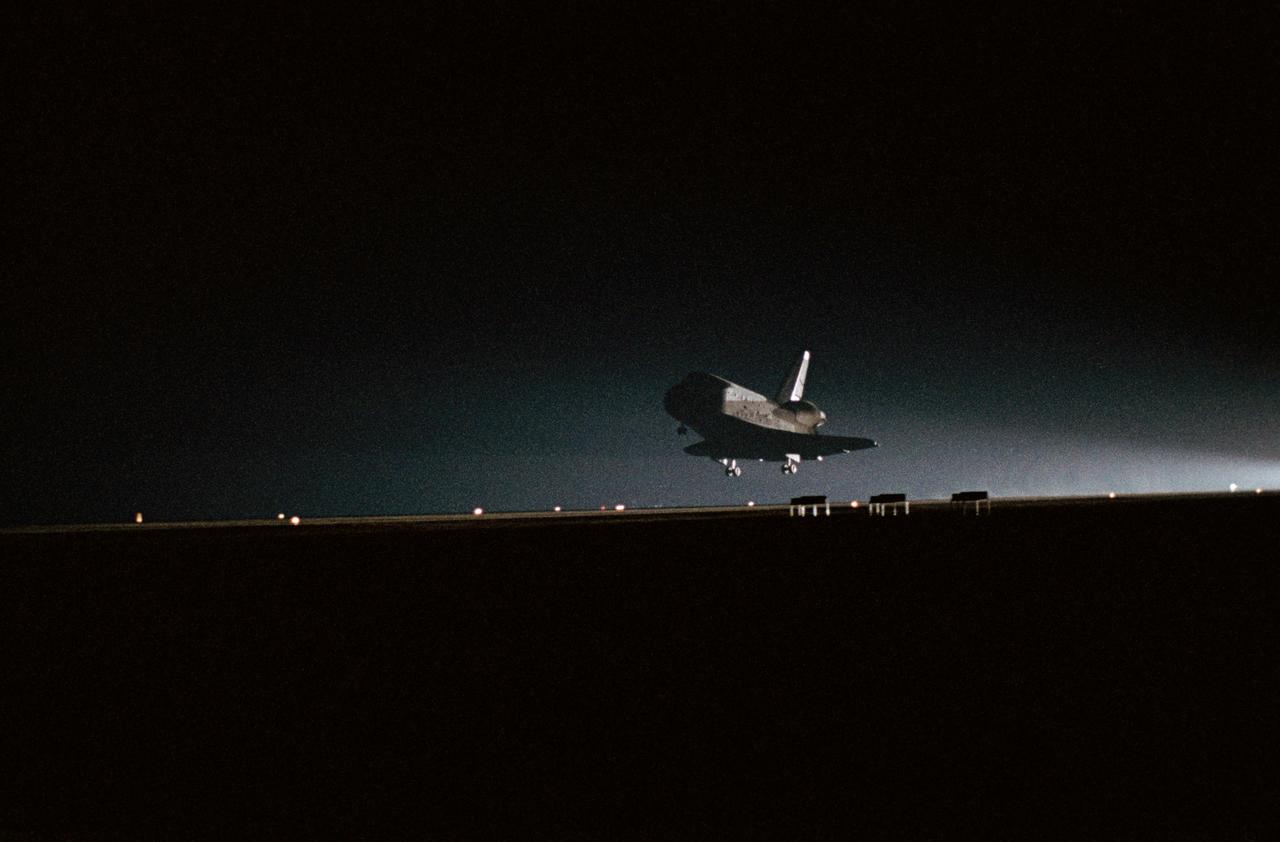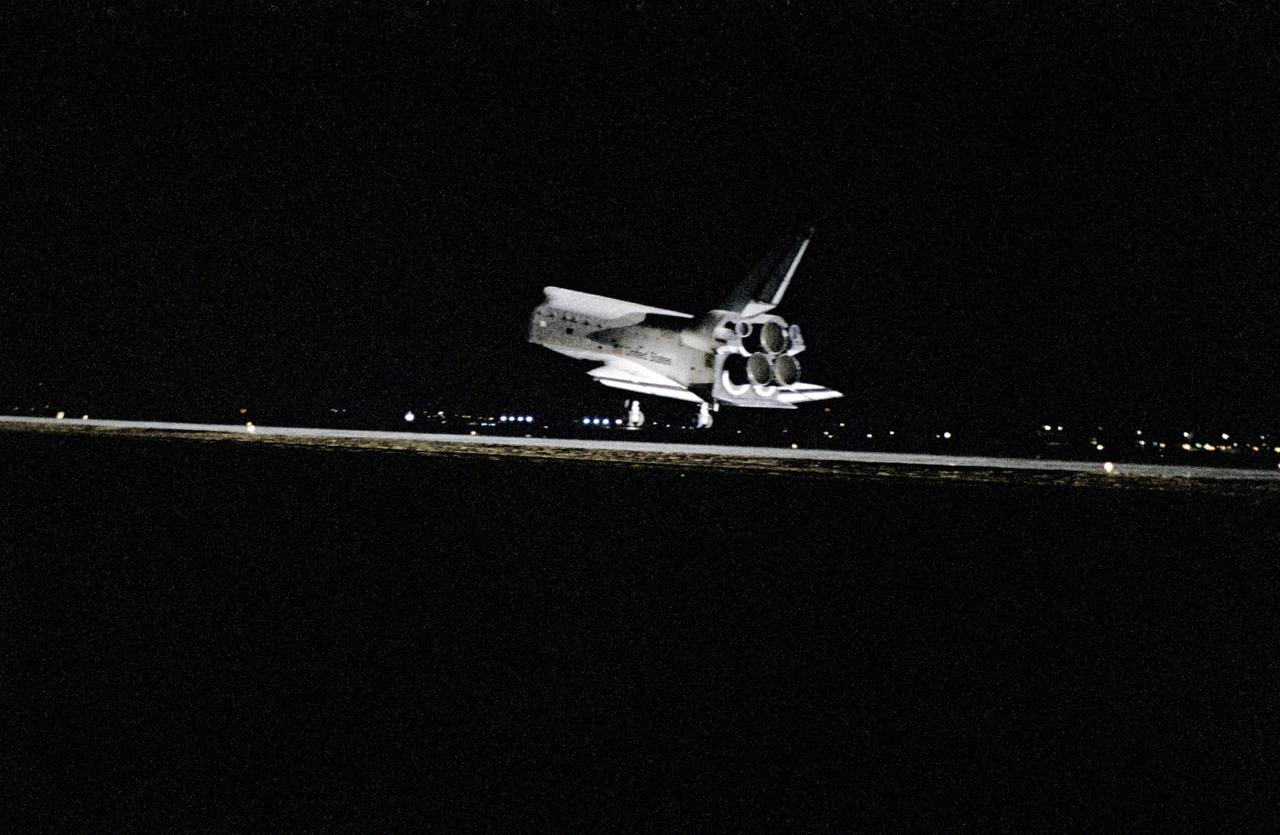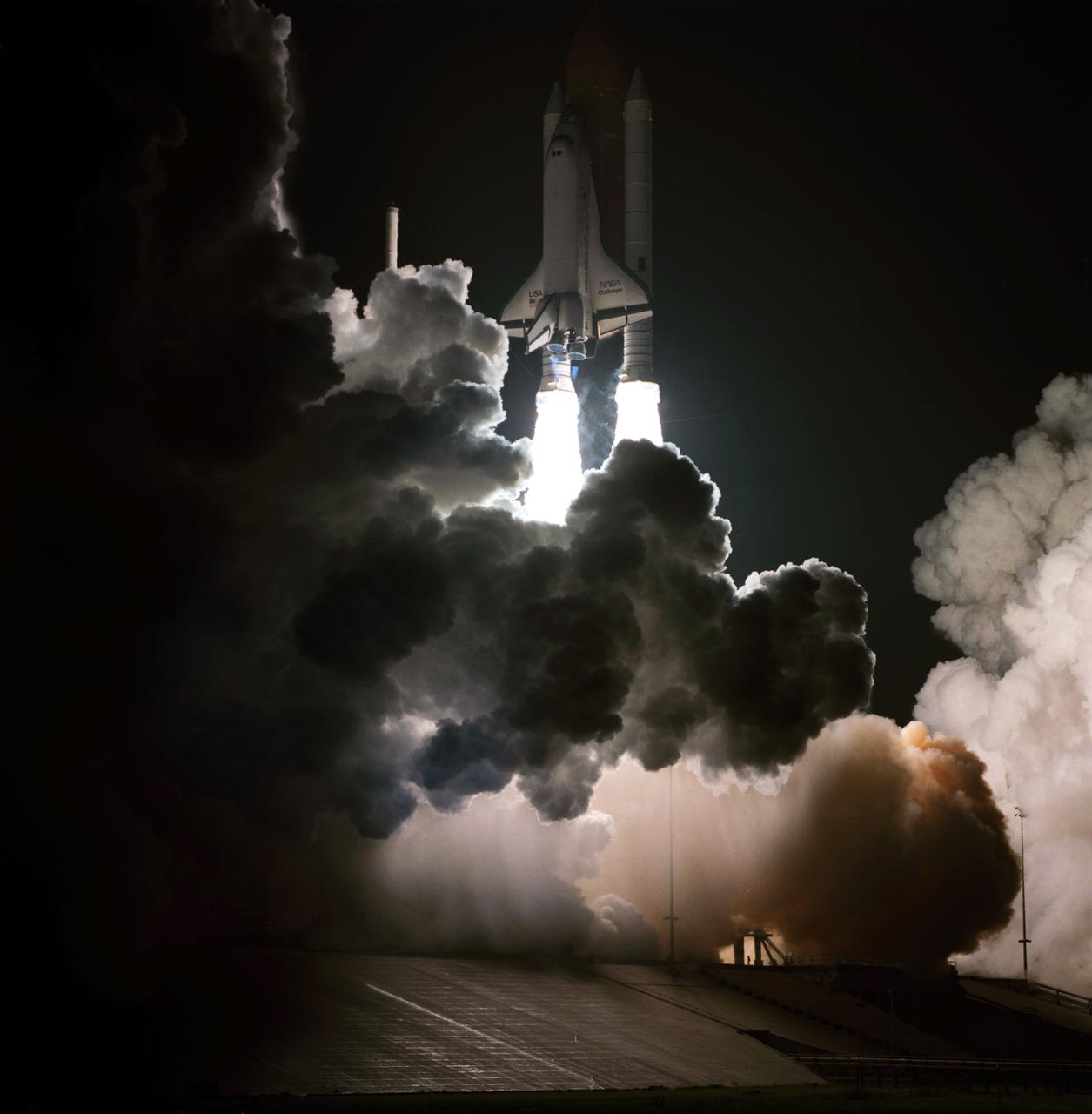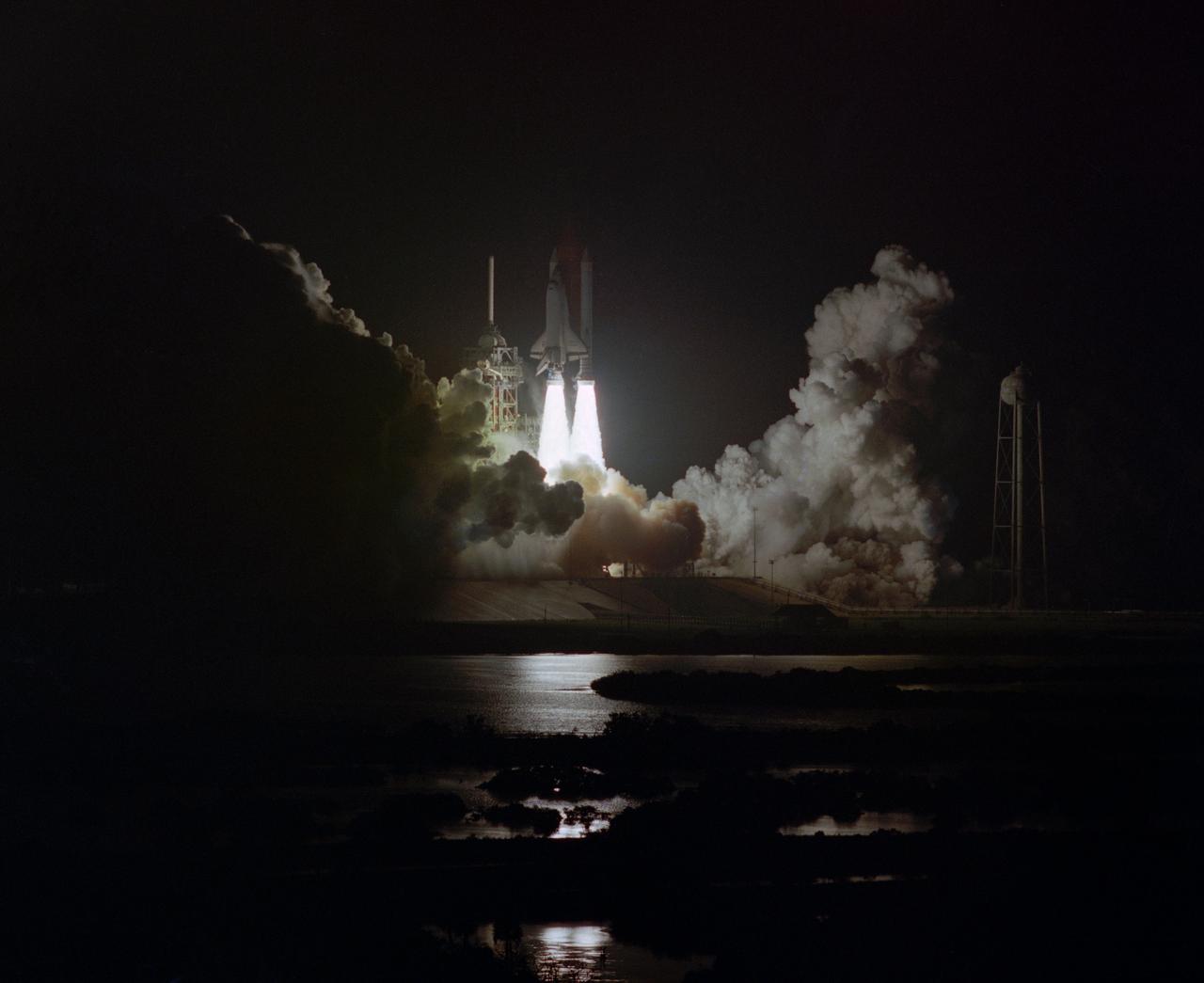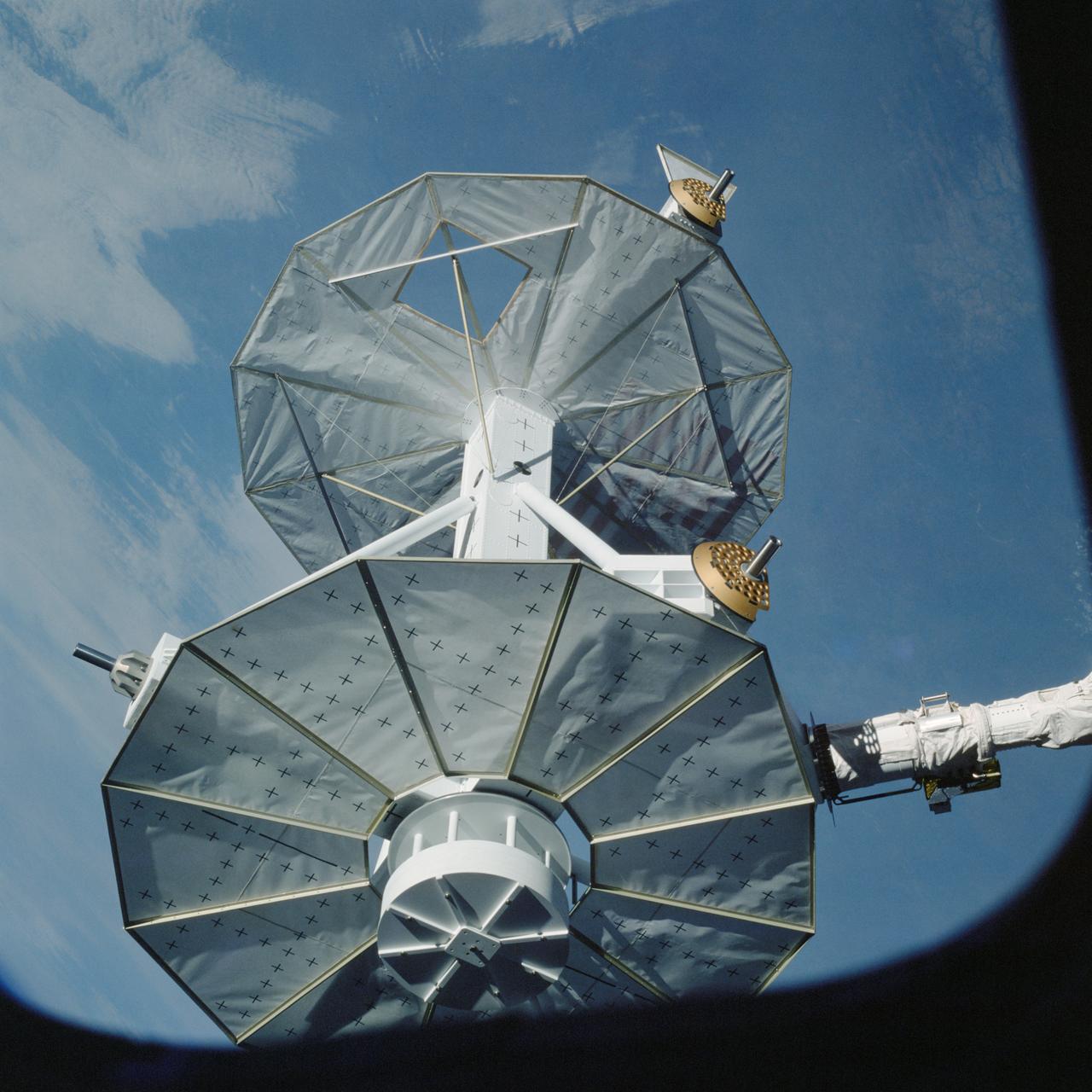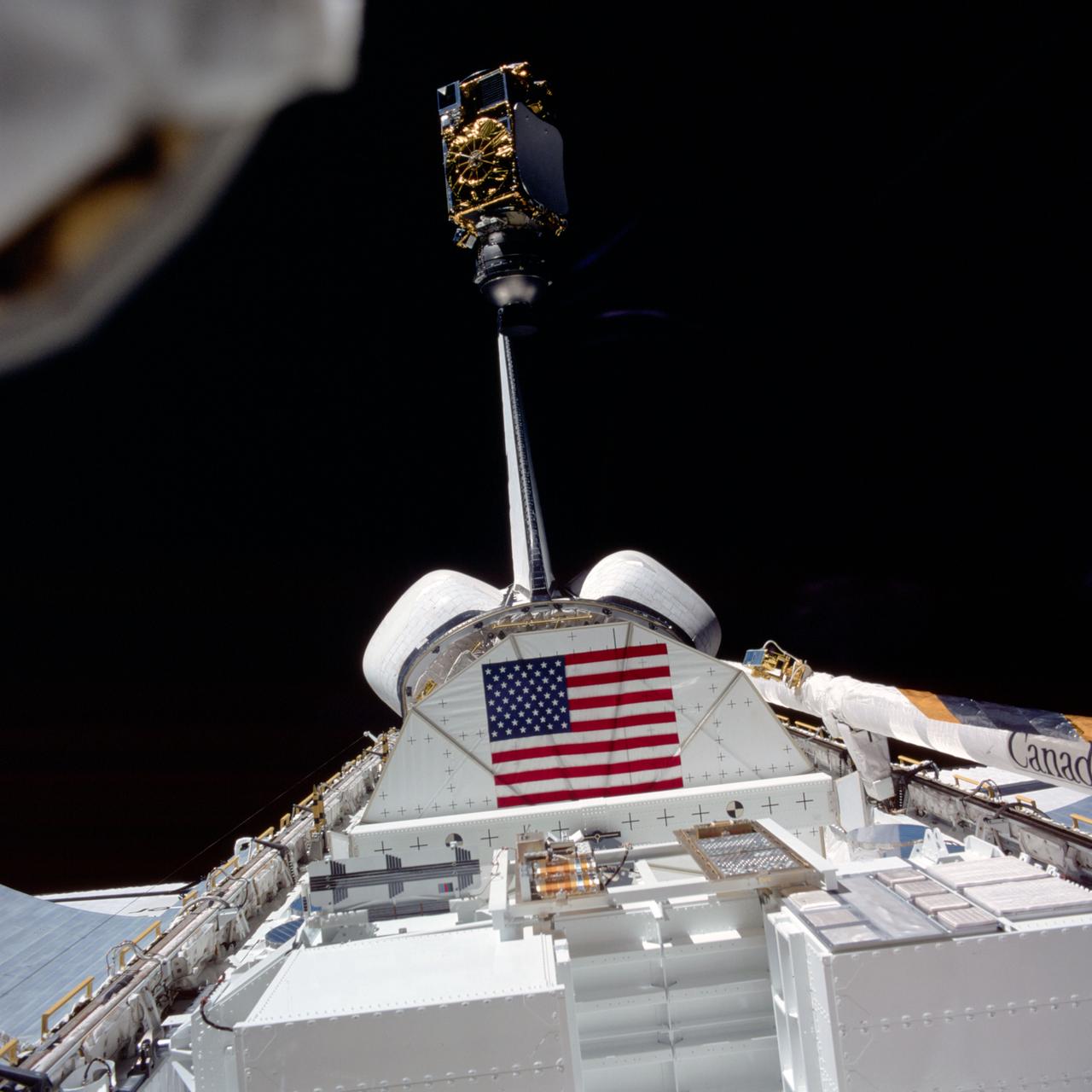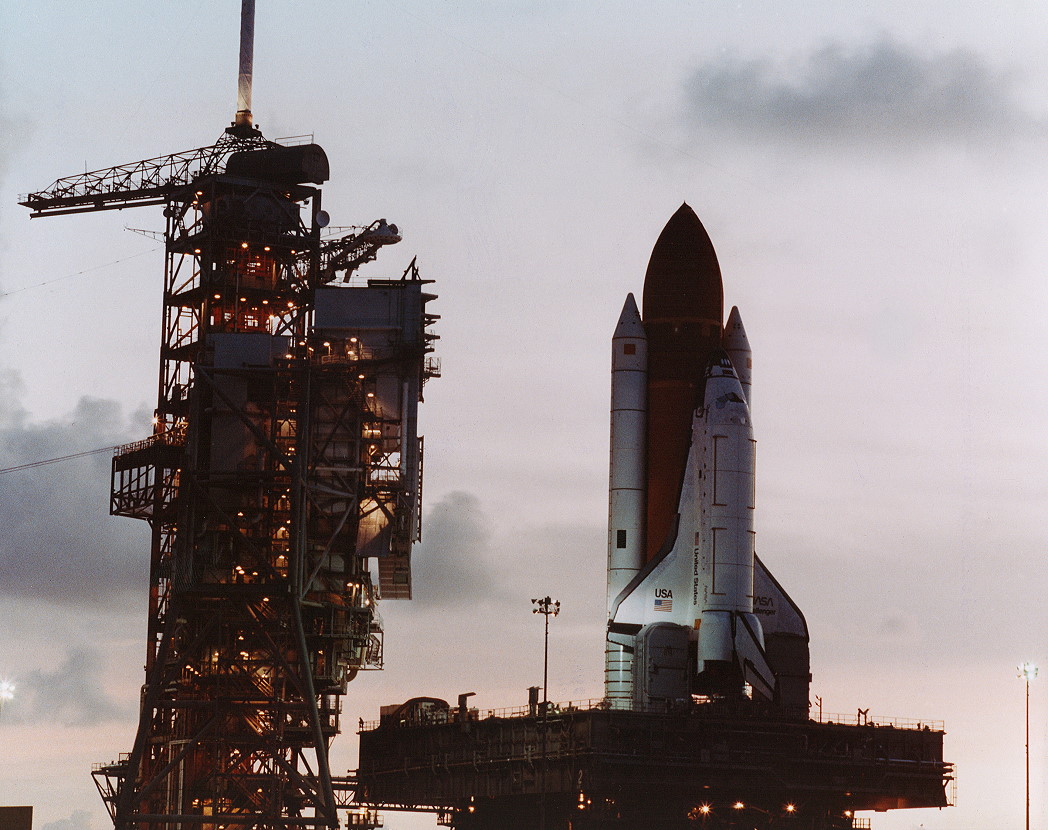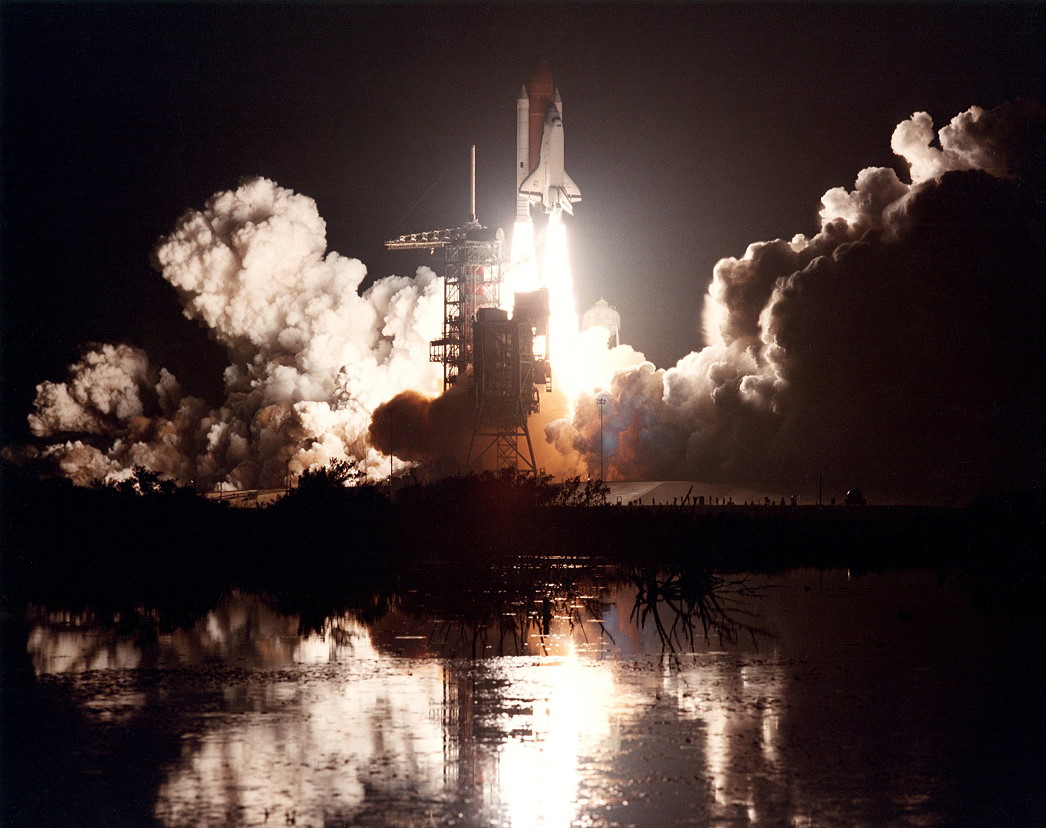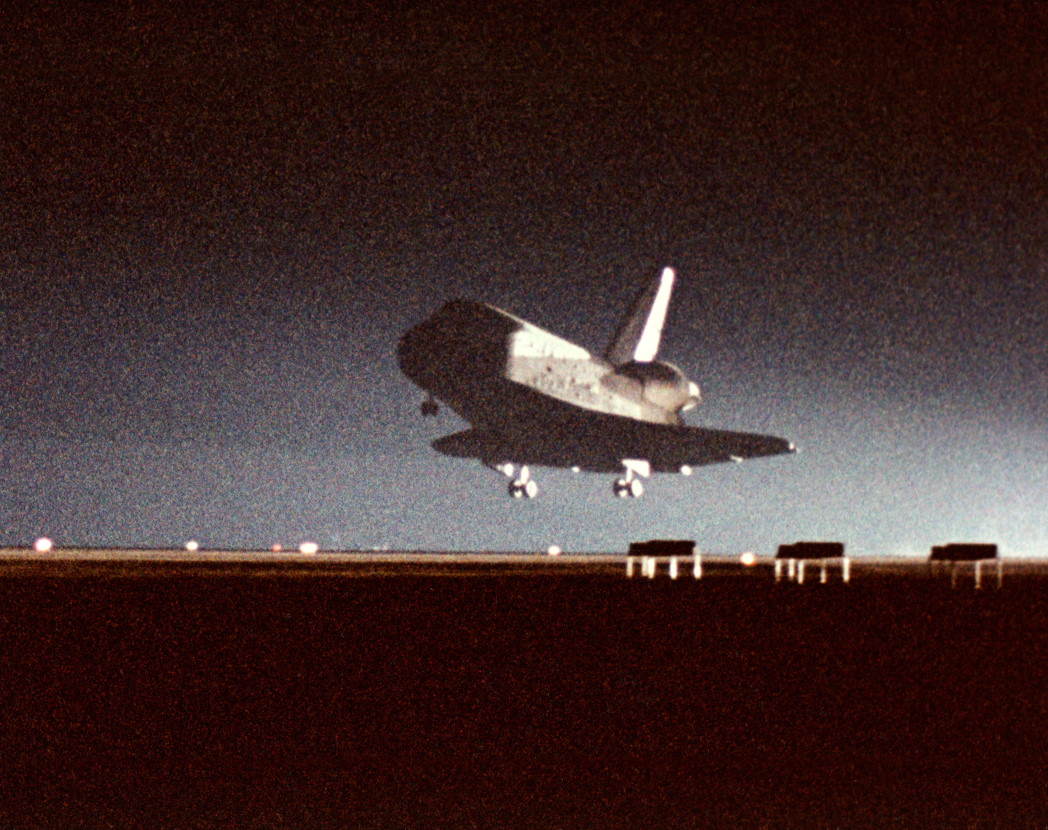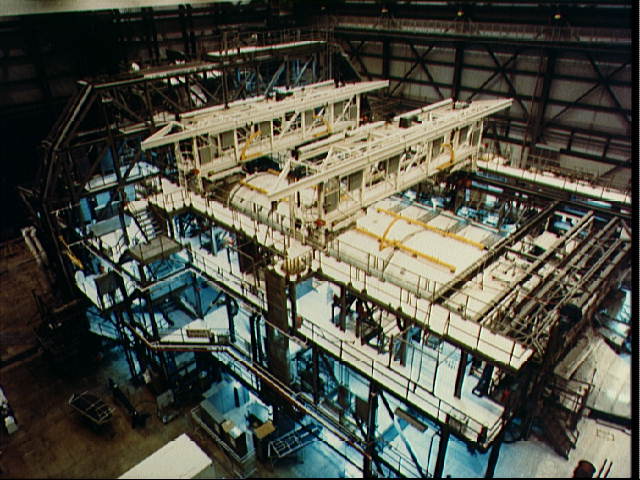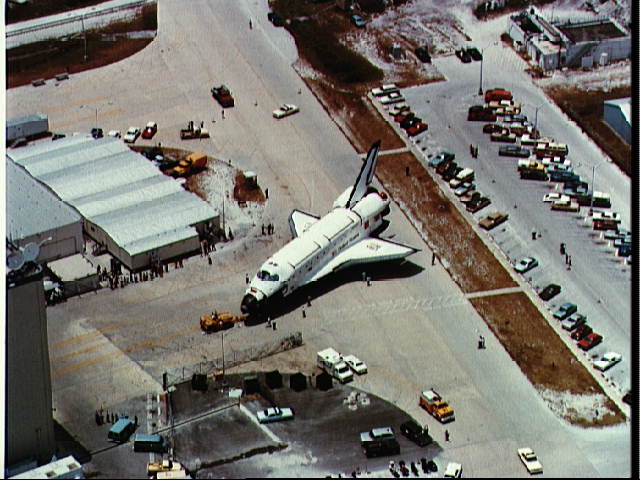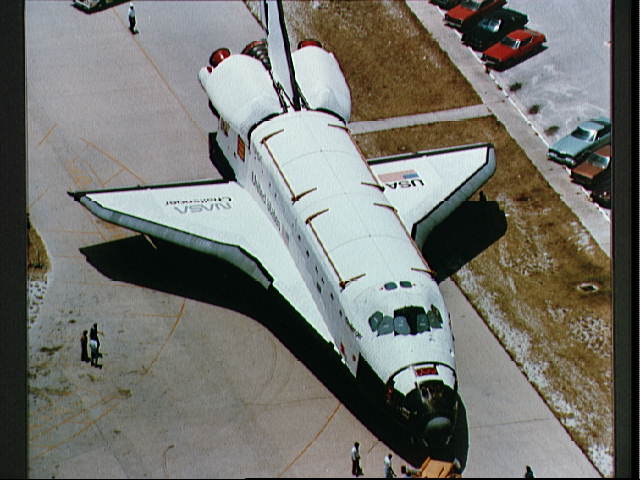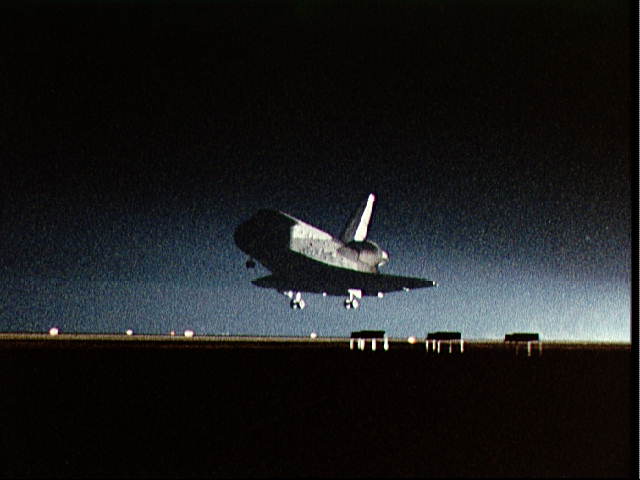STS-8 Fact Sheet
By Cliff Lethbridge

STS-8 — Challenger
8th Space Shuttle Mission
3rd Flight of Challenger
Crew:
Richard H. Truly, Commander
Daniel G. Brandenstein, Pilot
Dale A. Gardner, Mission Specialist
Guion S. Bluford, Jr., Mission Specialist
William E. Thornton, Mission Specialist
Orbiter Preparations:
Tow to Orbiter Processing Facility – June 30, 1983
Rollover to Vehicle Assembly Building – July 26, 1983
Rollout to Launch Pad 39A – August 2, 1983
Launch:
August 30, 1983 – 2:32:00 a.m. EDT. Launch was delayed 17 minutes due to bad weather. This was the first night launch of a Space Shuttle.
Landing:
September 5, 1983 – 12:40:43 a.m. PDT at Runway 22, Edwards Air Force Base, California. Rollout distance was 9,371 feet. Rollout time was 50 seconds. Mission duration was 6 days, 1 hour, 8 minutes, 43 seconds. Landing occurred during the 98th orbit. This was the first night landing of a Space Shuttle.
Mission Summary:
Guion S. Bluford became the first African-American to fly in space. INSAT-1B, a multipurpose Indian satellite, was deployed using a PAM-D solid rocket motor.
The nose of the orbiter was turned away from the sun for 14 hours to test the flight deck area’s exposure to extreme cold. For the Development Flight Instrumentation Pallet (DFI-PLT) the crew filmed performance of an experimental heat pipe mounted in the cargo bay.
Challenger dropped to an altitude of 139 miles to perform tests in the earth’s thin atomic oxygen layer to try to identify what makes parts of the orbiter glow at night. The Shuttle’s remote manipulator arm was tested to determine its joint performance with higher loads. Six rats were flown in an enclosed module to observe animal reactions in space.
Other payloads included the Continuous Flow Electrophoresis System (CFES), one SSIP experiment, Incubator Cell Attachment Test (ICAT), Investigation of STS Atmospheric Luminosities (ISAL), Radiation Monitoring Equipment (RME) and five GAS canisters including eight cans of postal covers. Testing of the TDRS-1 satellite using the Shuttle’s Ku-band antenna was performed, as were space adaptation medical experiments.
SELECTED NASA PHOTOS FROM STS-8
